Turning Origami into Portable Solar Power
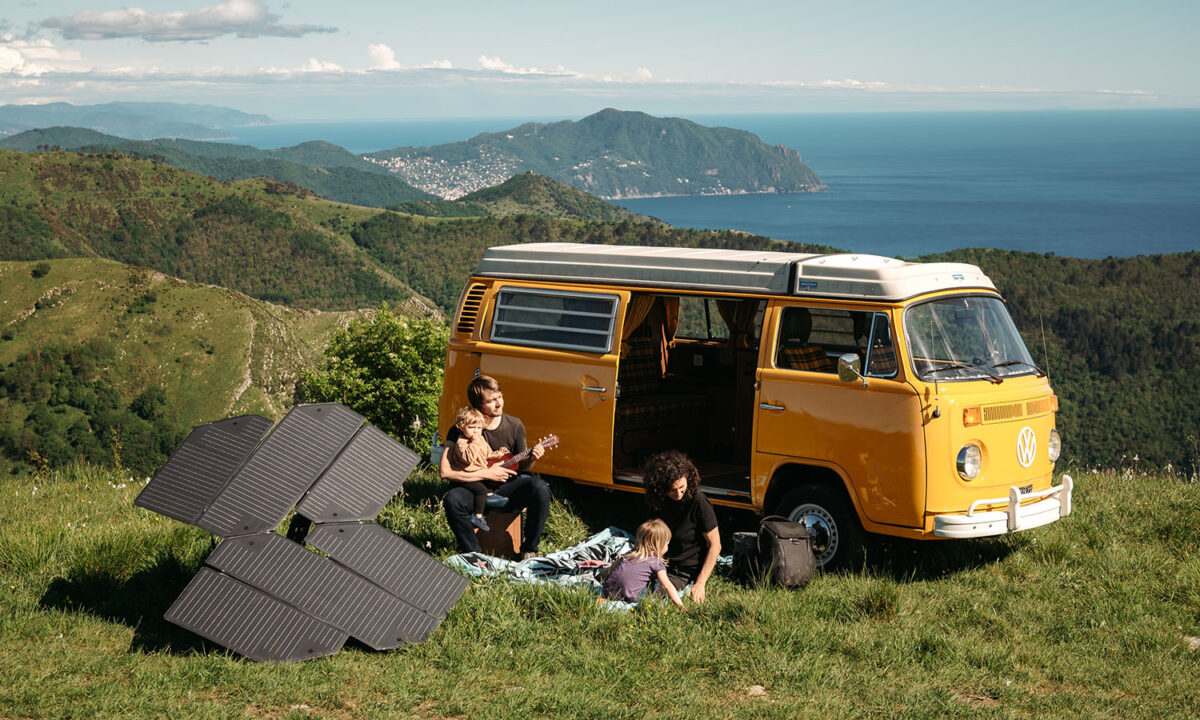
Italian startup Levante uses recycled carbon fiber to make foldable solar panels

Sara Plaga and Kim-Joar Myklebust co-founded Levante in Italy in 2021.
A young couple in Italy has married advanced polymer technology with an ancient Japanese art form to develop a new type of highly portable solar panel.
Sara Plaga and Kim-Joar Myklebust share the love of nature and travel, both by camper van and sailing boat. They found themselves frustrated by the challenge of finding clean energy wherever they went.
Shortcomings of current solar panels
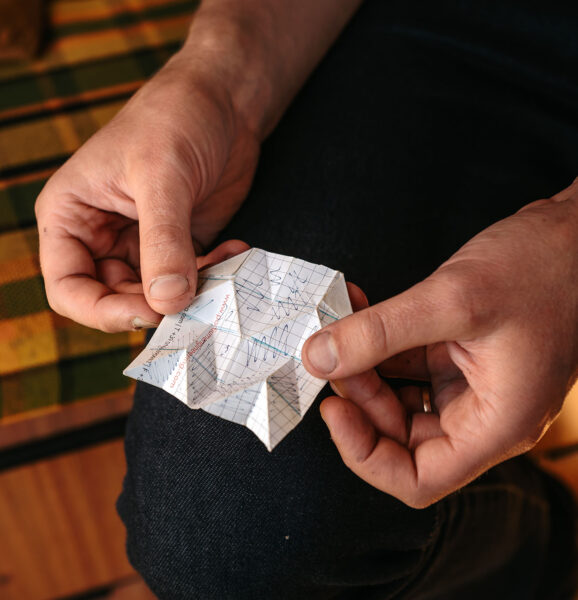
After drawing inspiration from the origami solar panels used on the satellites, it all started with some folded paper.
“Although the use of renewable energy in mobility is already widespread, the current solar panel solutions still have too many limitations,” says Plaga. “Rigid solar panels, whilst powerful, are bulky, heavy and constrained to a permanent installation. This greatly reduces the number of applications where a rigid panel is a suitable solution, especially in a mobile context.
“Portable solar panels, on the other hand, are too flimsy, still bulky and just not powerful enough to make a meaningful contribution to covering the energy requirements needed when traveling.”
So they set about trying to find an efficient, practical way to capture solar energy.
Leveraging race cars and recycled materials
Myklebust, a design engineer who moved to Italy from his native Norway to design race cars, earned his Master’s degree in design and engineering from Politecnico di Milano. As part of his thesis, he studied the recycling of waste materials and internal reuse possibilities. Plaga previously worked as a marketing and sport category leader for Carl Zeiss Vision in Italy.
The parents of three small children –– the latest born just days after the CES 2024 trade show in Las Vegas at which Levante exhibited –– combined these passions and skills to develop a solution to their energy challenge.
“We found the solution taking inspiration from the origami solar panels used on the satellites,” said Myklebust. “The origami technique allowed us to develop a rigid surface that could be folded in a very compact and portable structure.”
In Italy, from concept to startup
They developed their first paper prototype in February 2020. To further the idea in 2021 they co-founded a Milan-based greentech startup called Levante Srl. (See the timeline here.)
Last summer they launched a Kickstarter campaign, with the goal of raising $10,000. They surpassed that goal in less than one hour, and eventually raised $94,022 from 77 supporters, primarily from the U.S.
Introducing … the Origami Solar Panel
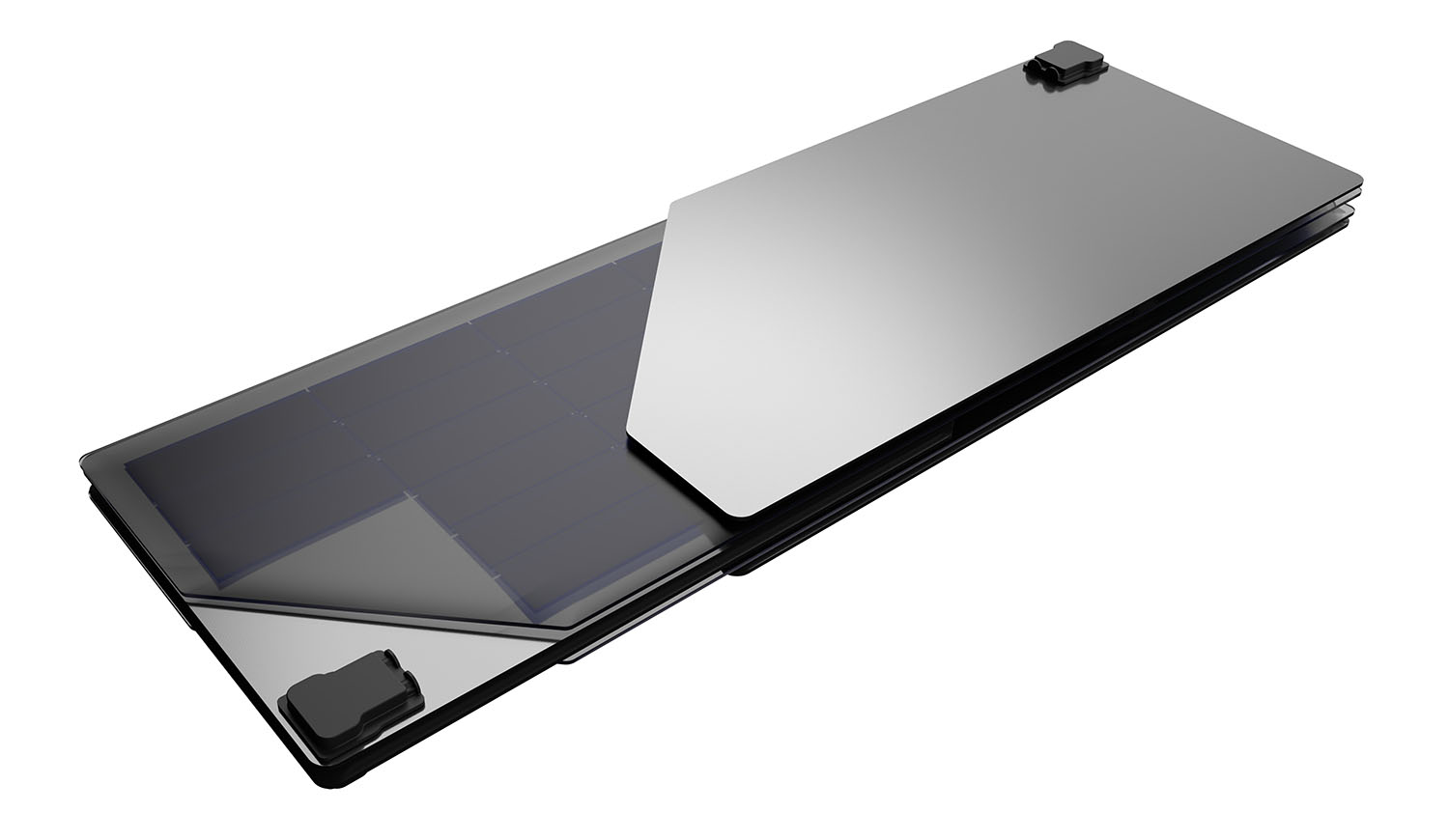
This render of the medium-sized folded panel shows its compact size of just 47 x 16 x 2 inches.
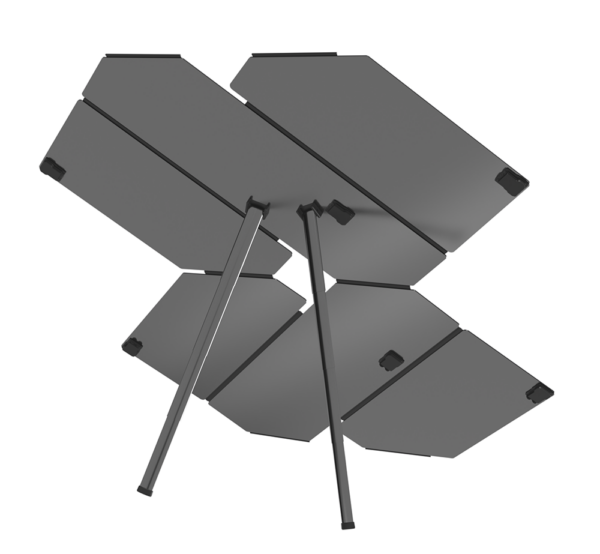
Each model comes with an adjustable telescopic arm to angle the panel toward the sun between 30 and 60 degrees.
They have now launched the Origami Solar Panel, available in two sizes –– medium and large. Myklebust opted to encompass the integrated solar cells in a thermoplastic polyolefin reinforced with carbon fiber. The durable, rigid, foldable frame is molded in Italy using carbon fiber recycled from the automotive industry, primarily race cars. (See video) “The rigidity of the carbon fiber,” he notes, “protects the photovoltaic cells, thereby elongating the life of the solar panel.”
The medium panel weighs roughly 20 pounds, can generate 330 watt peak capacity (Wp) and measures just 47 x 16 x 2 inches when closed. Once opened, it expands to 69 x 63 x 1 inches. The large model weighs about 28 pounds, can generate 500 Wp and measures 47 x 16 x 3 inches when folded up. When open, it expands to 96 x 63 x 1 inches. Both come with an adjustable telescopic arm to angle the panel toward the sun between 30 and 60 degrees.
The carbon fiber has a matt black finish and each module has its own junction box with MC4 cables. The monocrystalline silicon cells have a 25.5 percent conversion efficiency.
Lightweight, more compact, more sustainable
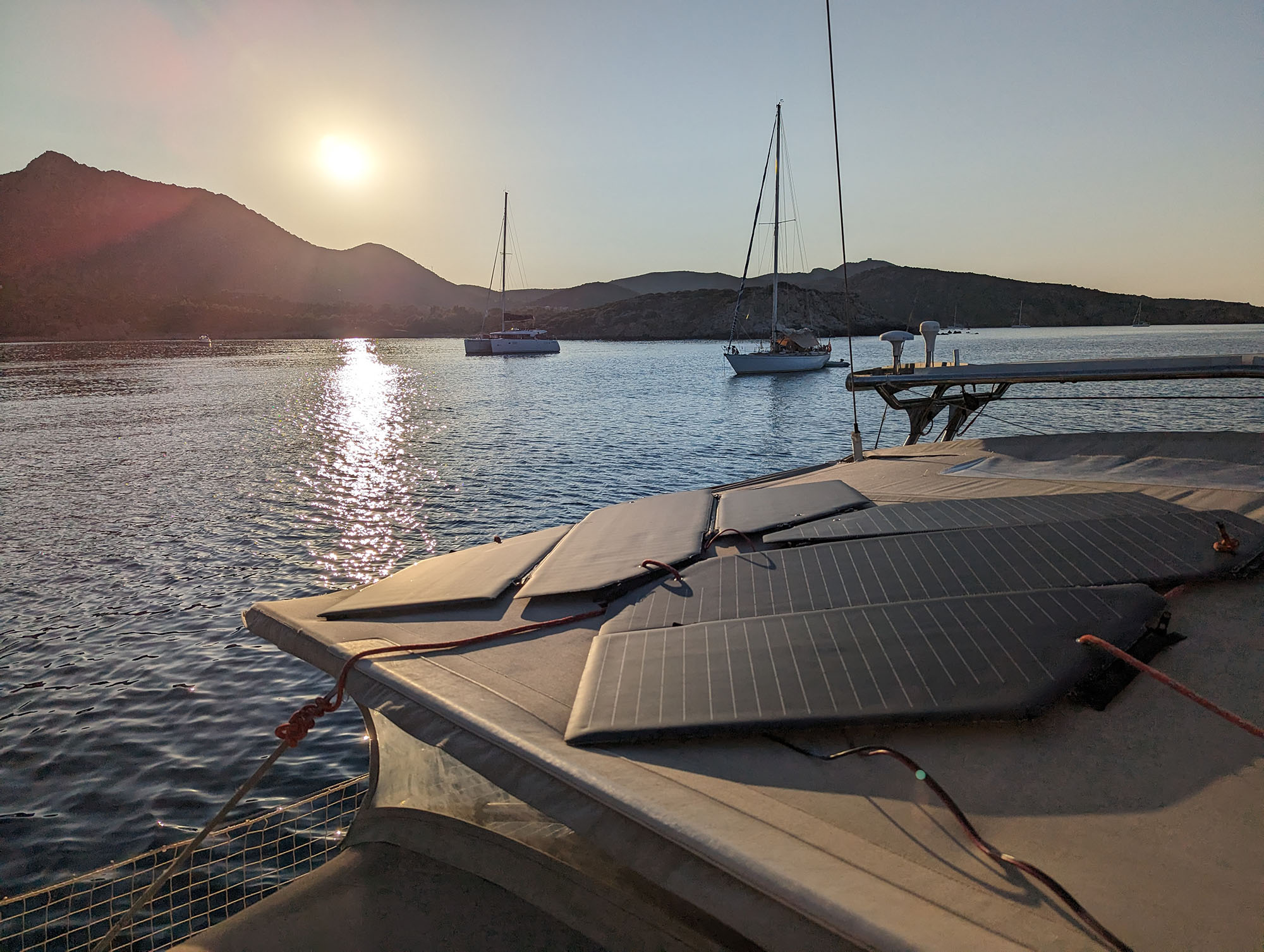
Levante partnered with Sailing Uma to further optimize the panels for use on sailboats.
Myklebust explains that their solar panels are 20 percent lighter than other foldable panels, 40 percent more compact, and emit half the carbon emissions during the production of similar products. They are also entirely designed and made in Italy, using recycled carbon fiber, blending quality craftsmanship and Italian motorsport engineering expertise.
Levante has developed and tested its panels in collaboration with Sailing Uma, run by nautical experts Dan and Kika who are sailing the world in an electric sailboat. Since testing the prototype on Uma (the boat), they have further optimized and engineered their panels by working with the automotive engineering studio MAN Evotech Srl in Turin, Italy.
Levante is actively seeking collaborative partners to take the project to the next level, he said.
“Now,” Myklebust and Plaga state on their website, “we are growing a family, a startup, a team and a product following the values of freedom, transparency, respect, collaboration and impact. We believe that as humans and as a company we are responsible to take a step every day towards a better planet and, as Gandhi said, be the change you want to see in the world.”
Other CES 2024 Stories in Plastics Engineering:
- Hear! Hear! says a Leading Global Eyewear Maker (Jan. 25, 2025)
- Honda’s Foldable Electric Scooter Earns CES Innovation Award (Jan. 23, 2024)
- Dutch Firm’s Solar City Car Offers Affordable Mobility Option (Jan. 19, 2024)
- Sky’s the Limit for Medical Deliveries by Drone (Jan. 18, 2024)
- Bioengineered House Plant Acts as Natural Air-purification System (Jan. 16, 2024)
